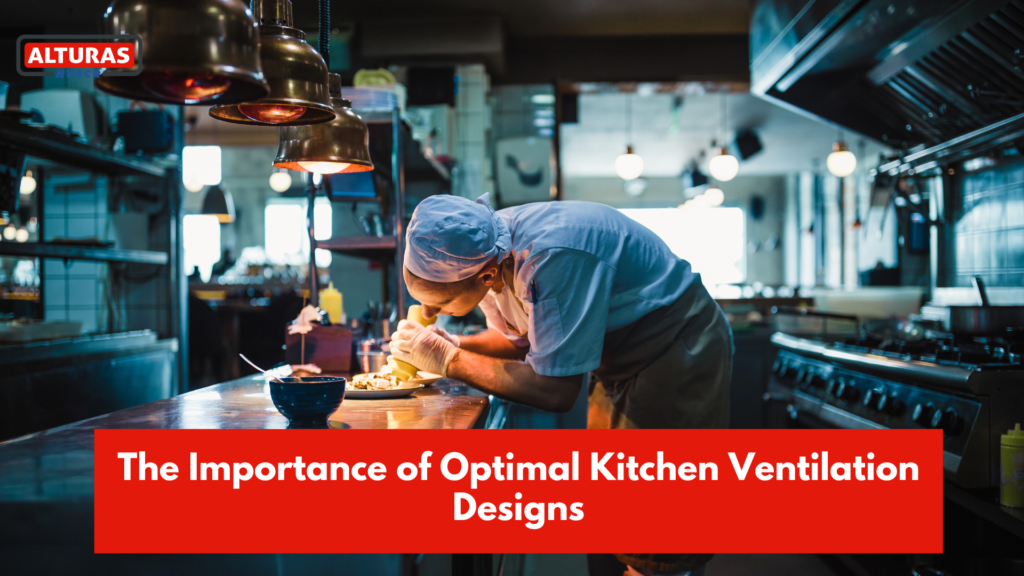A well-designed kitchen is a culinary haven, a space where creativity flourishes and delicious aromas fill the air. However, the heart of any kitchen, the cooking area, can quickly become a battleground against grease, smoke, and unpleasant odors if not properly ventilated. This is where the significance of kitchen ventilation designs comes into play. From ensuring clean air quality to preventing potential hazards, effective ventilation systems are indispensable for any home chef. In this comprehensive guide, we will share kitchen ventilation designs, exploring their importance, various types, factors to consider, and expert tips for creating a healthy and efficient cooking environment.
Understanding the Importance of Kitchen Ventilation
The role of kitchen ventilation extends far beyond merely clearing away smoke and odors. A well-ventilated kitchen is crucial for several reasons:
- Health and Well-being: Cooking releases various pollutants, including grease, carbon monoxide, and volatile organic compounds (VOCs). Proper ventilation removes these contaminants, safeguarding your health and preventing respiratory issues.
- Fire Prevention: Grease buildup in ductwork is a significant fire hazard. Regular ventilation helps minimize this risk by efficiently removing grease particles.
- Property Value: A kitchen with excellent ventilation is more appealing to potential buyers, increasing your home’s value.
- Kitchen Aesthetics: Modern ventilation systems are available in stylish designs that can enhance your kitchen’s overall appearance.
Key Components of a Kitchen Ventilation System
A typical kitchen ventilation system comprises several essential components:
- Range Hood: The heart of the system, the range hood captures smoke, grease, and odors produced during cooking.
- Ductwork: This network of pipes transports the extracted air to the exterior of your home.
- Exhaust Fan: Located within the range hood or externally, the exhaust fan draws air through the ductwork and expels it outside.
- Make-up Air: To maintain indoor air quality, fresh air is introduced into the kitchen to replace the exhausted air.
Also Read: Make-up Air for Commercial Kitchen Hoods
Types of Kitchen Ventilation Systems
There are primarily two types of kitchen ventilation systems:
Ducted Ventilation Systems
Ducted systems are the most common and effective option. They involve a range hood connected to ductwork that vents the air directly outside. This type of system efficiently removes contaminants and provides optimal ventilation.
Ductless Ventilation Systems
Ductless systems, also known as recirculating hoods, filter and recirculate air back into the kitchen. While convenient for homes without external venting options, they are generally less effective at removing contaminants compared to ducted systems.
Factors to Consider When Choosing a Kitchen Ventilation System
Selecting the right kitchen ventilation system involves several factors:
- Kitchen Size and Layout: The size and layout of your kitchen determine the appropriate hood size and ductwork requirements.
- Cooking Habits: The frequency and intensity of your cooking activities influence the ventilation system’s capacity.
- Budget: Ventilation systems vary in price, so consider your budget when making a choice.
- Aesthetic Preferences: Choose a range hood that complements your kitchen’s style and design.
Designing Your Ideal Kitchen Ventilation System
Creating an efficient kitchen ventilation system requires careful planning and consideration. Here are some expert tips:
- Proper Hood Size: Ensure the range hood is the right size for your cooktop. Undersized hoods may struggle to capture contaminants effectively. Ensure hood installation is done properly.
- Ductwork Optimization: Minimize bends and elbows in the ductwork to maintain optimal airflow.
- Regular Maintenance: Clean the range hood filter regularly to prevent grease buildup and maintain efficiency.
- Make-up Air Considerations: If using a ductless system, ensure adequate fresh air supply to prevent negative pressure issues.
- Professional Installation: For optimal performance and safety, consider hiring a professional to install your ventilation system.
The Impact of Poor Kitchen Ventilation
Neglecting proper kitchen ventilation can lead to various problems:
- Health Issues: Exposure to pollutants can cause respiratory problems, allergies, and headaches.
- Property Damage: Grease buildup can lead to fires, damaging your kitchen and potentially spreading to other areas of your home.
- Unpleasant Odors: Poor ventilation allows cooking odors to linger, affecting the overall atmosphere of your home.
Also Read: Restaurant Ventilation System Guide
Conclusion
Investing in a well-designed kitchen ventilation system is essential for creating a healthy, safe, and pleasant cooking environment. By understanding the importance of ventilation, considering different system types, and following expert tips, you can make informed decisions to enhance your kitchen’s functionality and aesthetics. Remember, a well-ventilated kitchen is not only a place to cook but also a space to enjoy, relax, and entertain.

